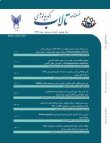Study of trophy status of Amirkelaye wetland in Iran using TSI index
Amirkelaye international wetland, with an area of 935 acres is located in Gilan province. Agricultural runoffs, water withdraws for agricultural purpose and plants growing, especially submerged and marginal plants are of the main threatening factors in this wetland which reduce its surface and therefore it is necessary to determine the trophy status in the case of adverse circumstances, the reclamation measures can be done for it. The research was made from autumn 1392 to summer 1393 in order to check the status of Amirkelaye wetland trophy. Sampling was done from 6 stations during four seasons, and in which trophic state index (TSI) was examined using 4 parameters: total phosphorus (TP), total nitrogen (TN), the depth of Secchi disk (SD) and chlorophyll (chl-a). According to TSI index, Amirkelaye wetland is in the most critical state in the terms of SD parameter compared to TP, TN and chl-A parameters and in a better state in terms of chl-A parameter compared to TP, TN, and SD parameters. According to the statistical analysis, the average amount of total nitrogen in winter and summer was lowest and highest, respectively. The average amount of phosphate was observed as highest and lowest in winter and autumn, respectively. Average amount of chlorophyll A was highest in summer, but the other three seasons together in terms of the amount of chlorophyll A were not significantly different (P> 0.05). Average depth of Secchi disk was found the lowest and highest in summer and winter, respectively. Using Duncan statistical test, none of the variables of chlorophyll A, total nitrogen, total phosphorus and depth of Secchi disk at various stations were significantly different (P> 0.05). The results showed that in the autumn and winter, Amirkelaye wetland was in the Mesotrophic state and in the spring due to agricultural runoffs entering was in acute Mesotrophic state. In the summer, due to increased agricultural runoffs entering and the hot weather, it was in the Eutrophic state.


